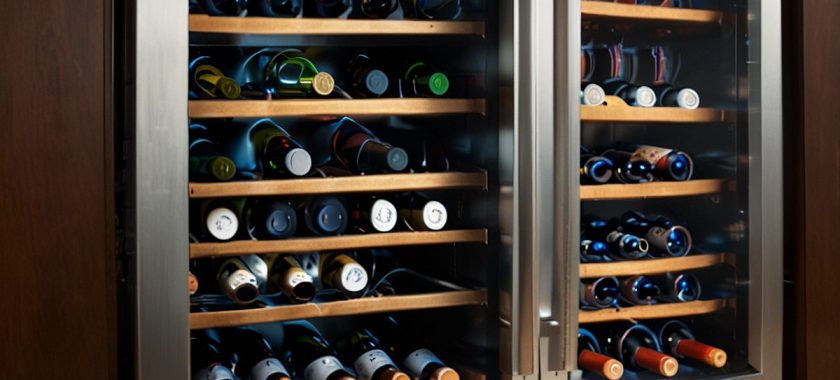Wine refrigerators have become essential appliances for enthusiasts and collectors who seek to preserve the quality and flavor of their wines. Among the advanced features in modern wine refrigerators is the electronic wine type recognition system. This technology identifies different types of wine and adjusts storage conditions accordingly, ensuring each wine is kept at its ideal temperature and humidity. However, like any sophisticated technology, electronic wine type recognition systems are not without their problems. Understanding the potential issues, their impacts, and how to mitigate them is crucial for maintaining the optimal functionality of these high-tech wine refrigerators.
The Role of Electronic Wine Type Recognition Systems
Electronic wine type recognition systems leverage sensors and software to identify and classify various wines stored in the refrigerator. This system typically involves:
- Scanning labels or utilizing a database to recognize the type of wine, such as red, white, sparkling, or dessert wine.
- Automatically adjusting the internal temperature and humidity settings based on the recognized wine type to ensure optimal storage conditions.
This technology aims to provide a hands-off experience for wine enthusiasts, ensuring that each bottle is stored perfectly without manual adjustments.
Common Problems with Wine Type Recognition Systems
Inaccurate Identification: One of the primary issues with electronic wine type recognition systems is the potential for inaccurate identification. Factors such as label wear, unique or non-standard labels, and barcode scanning errors can lead to misidentification of the wine type.
Software Glitches: Like all electronic systems, wine type recognition software can experience bugs and glitches. These can result in incorrect adjustments to storage conditions, potentially compromising the quality of the wine.
Hardware Failures: Sensors and scanning devices used for wine recognition can malfunction due to wear and tear, exposure to moisture, or manufacturing defects. Such failures can render the system ineffective or unreliable.
Database Limitations: The system’s accuracy heavily depends on an up-to-date and comprehensive database of wine types and labels. An incomplete or outdated database can lead to recognition errors and improper storage conditions.
User Interface Issues: Complex or unintuitive user interfaces can make it difficult for users to input or correct information manually, leading to frustrations and potential mistakes in the system’s operation.
Implications of Recognition System Failures
Suboptimal Storage Conditions: Incorrectly identified wines may be stored at improper temperatures or humidity levels, affecting their taste, aroma, and overall quality. For instance, storing red wine at a temperature suited for white wine can alter its aging process unfavorably.
Spoilage Risk: Continuous exposure to incorrect storage conditions can lead to wine spoilage. Wines that are too warm can age prematurely, while those stored too cold can develop off-flavors or become overly acidic.
Increased Maintenance and Costs: Frequent malfunctions or inaccuracies can necessitate additional maintenance and potential replacement of parts, increasing the overall cost of owning the wine refrigerator.
User Frustration: Persistent issues with the recognition system can frustrate users, diminishing the perceived value and convenience of the wine refrigerator. This can be particularly problematic for those who invest in high-end models expecting seamless operation.
Mitigating Problems with Wine Type Recognition Systems
Regular Software Updates: Keeping the system’s software up to date can help address bugs and improve the accuracy of wine recognition. Manufacturers should provide regular updates that enhance the system’s functionality and expand its database.
Database Management: Ensuring the wine type database is comprehensive and frequently updated is crucial. Users should have the ability to manually add new wines to the database if necessary.
Maintenance and Cleaning: Regular maintenance of the sensors and scanning devices can prevent malfunctions caused by dust, moisture, or physical wear. Cleaning the system periodically helps maintain its accuracy and reliability.
User Training and Support: Providing users with adequate training and support on how to use the system effectively can minimize user interface issues. Clear instructions and accessible customer support can help users troubleshoot common problems.
Manual Override Options: Incorporating manual override options allows users to input or correct wine types when the system fails to recognize them accurately. This feature can act as a fail-safe, ensuring wines are stored correctly despite recognition errors.
Quality Assurance: Investing in high-quality components and robust testing during the manufacturing process can reduce the likelihood of hardware failures. Manufacturers should prioritize durability and reliability in their design and production processes.
While electronic wine type recognition systems in wine refrigerators offer significant benefits in terms of convenience and precision, they are not immune to problems. Inaccurate identification, software glitches, hardware failures, and database limitations can all compromise the effectiveness of these systems. The implications of such failures range from suboptimal storage conditions and increased spoilage risk to higher maintenance costs and user frustration.
To mitigate these issues, regular software updates, comprehensive database management, routine maintenance, user training, manual override options, and robust quality assurance are essential. By addressing these challenges proactively, manufacturers and users can ensure that electronic wine type recognition systems enhance the wine storage experience rather than detract from it. Ultimately, a well-maintained and accurately functioning system can preserve the quality and enjoyment of wine, safeguarding the investment of collectors and enthusiasts alike.
Don’t let appliance malfunctions disrupt your daily routine. Trust Chula Vista Appliance Repair Company to get your appliances back up and running smoothly. Visit our website today to find out more about our exceptional services and how we can assist you. Experience the difference with Chula Vista Appliance Repair Company – your go-to expert for reliable appliance repairs.
Contact us
(619) 880-5508


